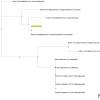
06-05-2012 23:34
 Martin Bemmann
Martin Bemmann
In my garden two shrubs of Hibiscus (15 to 20 year

20-11-2012 12:54
Hi allCan anyone confirm that this is L macrotichu

19-11-2012 23:43
 Edit Szilvásy
Edit Szilvásy
Hi all!I bring these specimens asking for your hel

20-11-2012 01:06
Esquivel-Rios EduardoHy All.I found this yellow-orange Hypocrea in a d

19-11-2012 23:30
 Edit Szilvásy
Edit Szilvásy
Hi all! I bring these specimens asking for your h

02-11-2012 21:23
 Michel Hairaud
Michel Hairaud
BonsoirHi to all, Cette espèce récoltée sur feu

19-11-2012 17:09
Bonjour à tous,Lac des Rouges Truites, Jura, 2.10

19-11-2012 16:55
Tourbière du Lac des Rouges Truites, Jura, 2.11.1

19-11-2012 16:30
Bonjour à tous,Voici quelques espèces récoltée
Fusarium on Hibiscus
Martin Bemmann,
06-05-2012 23:34
 In my garden two shrubs of Hibiscus (15 to 20 years old) did not survive the winter season. Today I observed lots of orange dots down to the roots that turned out to be conidiocarps of a Fusarium species. The last service I try to give to these beloved flowers is to give their hangman a name. ;-)
In my garden two shrubs of Hibiscus (15 to 20 years old) did not survive the winter season. Today I observed lots of orange dots down to the roots that turned out to be conidiocarps of a Fusarium species. The last service I try to give to these beloved flowers is to give their hangman a name. ;-)I attache some pictures, but the host will be certainly more helpful for determination, for those who know....
Typical conidia show 3 septa but 0-4 septa were observed as well.
Best regards
Martin
Chris Yeates,
07-05-2012 01:54

Re : Fusarium on Hibiscus
hello Martin
others with greater knowledge may contradict me, but my experience is that Fusarium is a 'culture or sequence' genus - easy to recognise at the generic level but impossible to name on macroscopic and microscopic information of field characters alone, unfortunately
Chris
others with greater knowledge may contradict me, but my experience is that Fusarium is a 'culture or sequence' genus - easy to recognise at the generic level but impossible to name on macroscopic and microscopic information of field characters alone, unfortunately
Chris
Hans-Otto Baral,
07-05-2012 07:43

Re : Fusarium on Hibiscus
Hi Martin & Chris
I made the same experience :-(
http://www.ascofrance.fr/search_forum/11579?
But you have the opportunity to await the teleomorph if any exists. Or did you remove the shrubs?
We have here also Hibiscus shrubs in gardens which look rather ill. I will have a look.
Are these Fusarium species really polyphagous? Or does the host help in the identification?
Zotto
I made the same experience :-(
http://www.ascofrance.fr/search_forum/11579?
But you have the opportunity to await the teleomorph if any exists. Or did you remove the shrubs?
We have here also Hibiscus shrubs in gardens which look rather ill. I will have a look.
Are these Fusarium species really polyphagous? Or does the host help in the identification?
Zotto
Christian Lechat,
07-05-2012 10:09

Re : Fusarium on Hibiscus
Hi Martin,
I would like to study and sequence your Fusarium, could you please to send me a part of your collection?
a lot of thanks
Christian
I would like to study and sequence your Fusarium, could you please to send me a part of your collection?
a lot of thanks
Christian
Martin Bemmann,
07-05-2012 10:23

Re : Fusarium on Hibiscus
Hi Christian,
I have tons of it...
I will send you some by tomorrow.
Best regards,
Martin
I have tons of it...
I will send you some by tomorrow.
Best regards,
Martin
Christian Lechat,
19-11-2012 21:33

Re : Fusarium on Hibiscus
Dear all,
here are molecular data of Fusarium on Hibiscus, no doubt, that is Gibberella pulicaris.
All my best
Chirstian
here are molecular data of Fusarium on Hibiscus, no doubt, that is Gibberella pulicaris.
All my best
Chirstian
Martin Bemmann,
20-11-2012 23:41

Re : Fusarium on Hibiscus
Dear Christian,
thank you very much for your efforts!
I have but a problem with your result. When I run a BLAST at GenBank with your sequence CLL12012_ITS4 the best match showing up is F. merismoides (not even fitting macroscopically to my find).
Is this due to the fact you choose ITS4 (no entry for Fusarium at GenBank features it) I cant't comprehend your result? I have to learn very much in this field!
curiously,
Martin
thank you very much for your efforts!
I have but a problem with your result. When I run a BLAST at GenBank with your sequence CLL12012_ITS4 the best match showing up is F. merismoides (not even fitting macroscopically to my find).
Is this due to the fact you choose ITS4 (no entry for Fusarium at GenBank features it) I cant't comprehend your result? I have to learn very much in this field!
curiously,
Martin
?
Martin Bemmann,
21-11-2012 19:56
Christian Lechat,
22-11-2012 14:36

Re : Fusarium on Hibiscus
Sorry dear Martin,
I made a mistake about sequence, the one I have posted is not from your specimen but it is a Dialonectriaa.
I attach the correct sequence.
excuse me,
Regards,
Christian
I made a mistake about sequence, the one I have posted is not from your specimen but it is a Dialonectriaa.
I attach the correct sequence.
excuse me,
Regards,
Christian
Martin Bemmann,
22-11-2012 21:19

Re : Fusarium on Hibiscus
Thank you Christian,
that explains a lot! So the name of my Hibiscus killer will be Fusarium sambucinum... ;-)
No, I learned meanwhile that last winter many shrubs died due to frost and those Fusarium fungi just entered the dead or dying plants.
Regards
Martin
that explains a lot! So the name of my Hibiscus killer will be Fusarium sambucinum... ;-)
No, I learned meanwhile that last winter many shrubs died due to frost and those Fusarium fungi just entered the dead or dying plants.
Regards
Martin
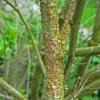
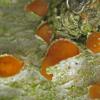
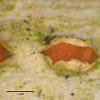
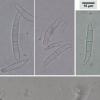
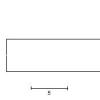
 Blast-CLL12012-0001.txt
Blast-CLL12012-0001.txt